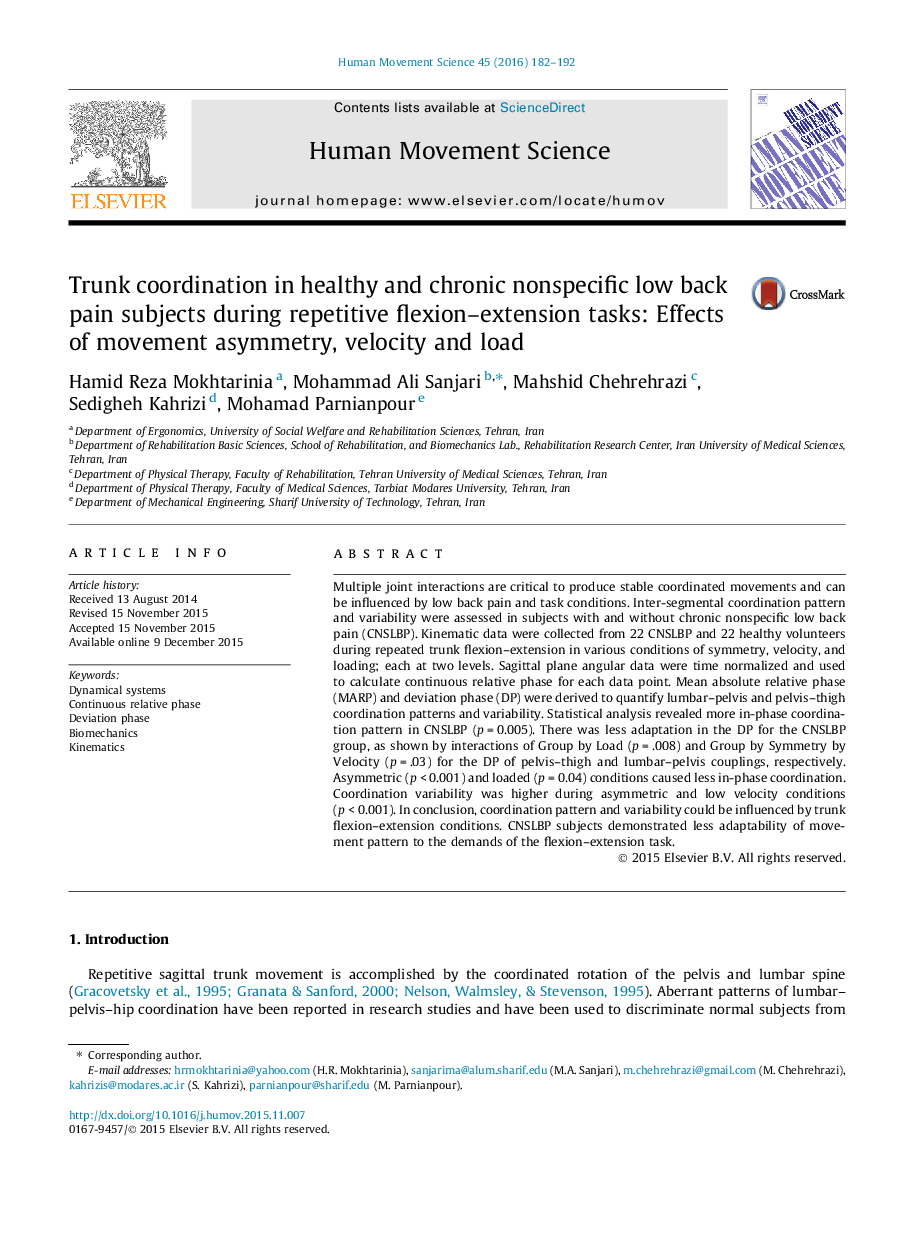| Article ID | Journal | Published Year | Pages | File Type |
|---|---|---|---|---|
| 7291678 | Human Movement Science | 2016 | 11 Pages |
Abstract
Multiple joint interactions are critical to produce stable coordinated movements and can be influenced by low back pain and task conditions. Inter-segmental coordination pattern and variability were assessed in subjects with and without chronic nonspecific low back pain (CNSLBP). Kinematic data were collected from 22 CNSLBP and 22 healthy volunteers during repeated trunk flexion-extension in various conditions of symmetry, velocity, and loading; each at two levels. Sagittal plane angular data were time normalized and used to calculate continuous relative phase for each data point. Mean absolute relative phase (MARP) and deviation phase (DP) were derived to quantify lumbar-pelvis and pelvis-thigh coordination patterns and variability. Statistical analysis revealed more in-phase coordination pattern in CNSLBP (p = 0.005). There was less adaptation in the DP for the CNSLBP group, as shown by interactions of Group by Load (p = .008) and Group by Symmetry by Velocity (p = .03) for the DP of pelvis-thigh and lumbar-pelvis couplings, respectively. Asymmetric (p < 0.001) and loaded (p = 0.04) conditions caused less in-phase coordination. Coordination variability was higher during asymmetric and low velocity conditions (p < 0.001). In conclusion, coordination pattern and variability could be influenced by trunk flexion-extension conditions. CNSLBP subjects demonstrated less adaptability of movement pattern to the demands of the flexion-extension task.
Related Topics
Life Sciences
Neuroscience
Cognitive Neuroscience
Authors
Hamid Reza Mokhtarinia, Mohammad Ali Sanjari, Mahshid Chehrehrazi, Sedigheh Kahrizi, Mohamad Parnianpour,
